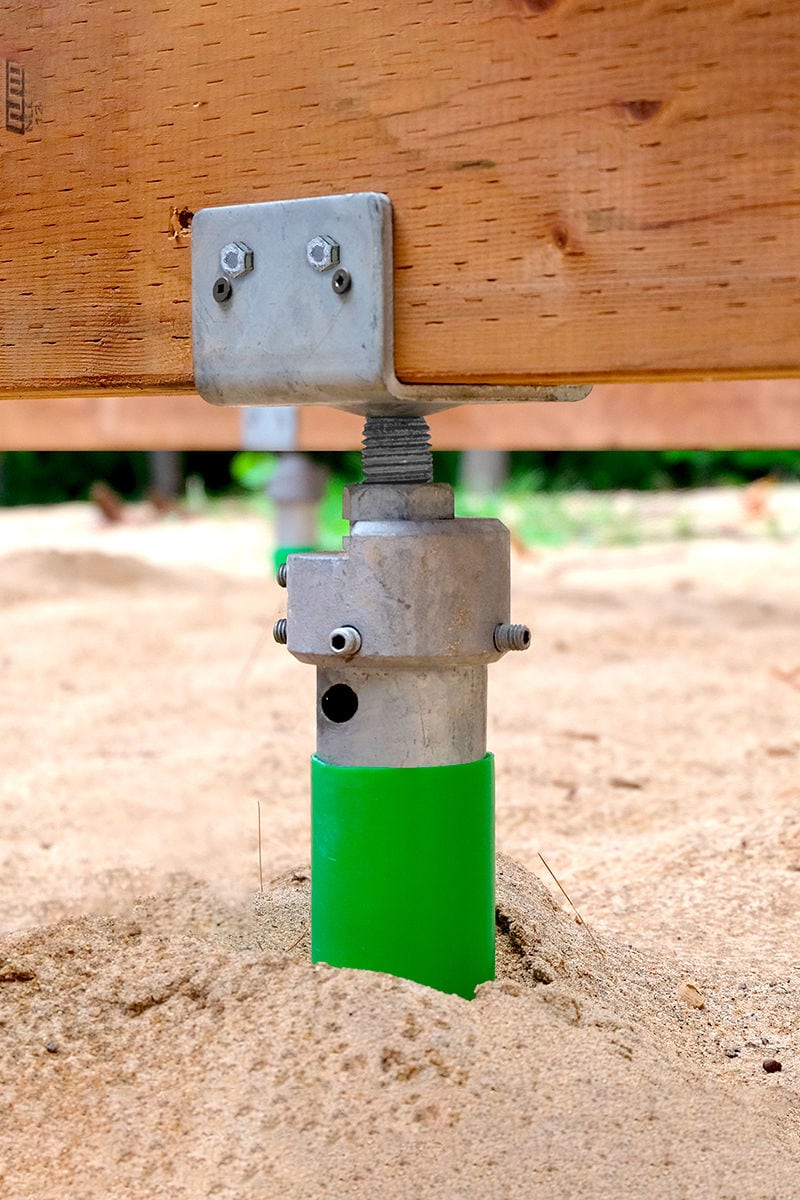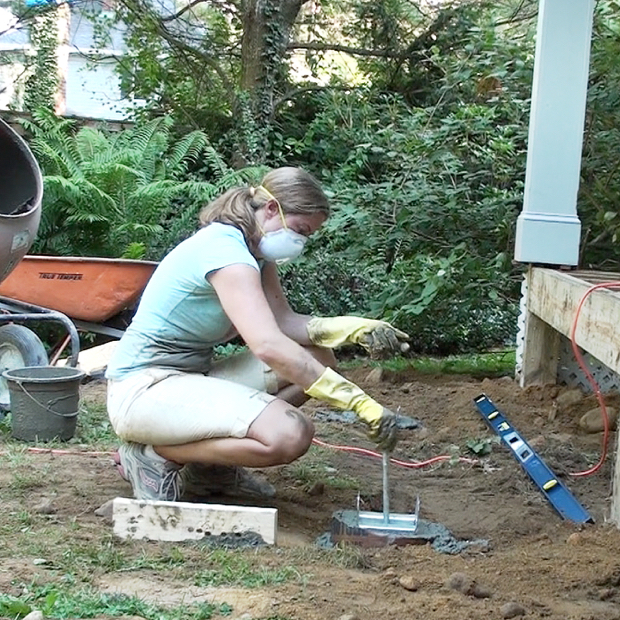Engineered for Success: The Scientific Research Behind Durable and Durable Deck Footings
Engineered for Success: The Scientific Research Behind Durable and Durable Deck Footings
Blog Article
Professional Tips for Putting Up Deck Footings to Assistance Your Outdoor Room
When it involves developing a deck, among the most critical elements to consider is the installation of proper grounds. These grounds are the foundation upon which your outside space will relax, offering security and support for years to find. What specifically does it take to mount deck footings appropriately? In this conversation, we will check out skilled suggestions and methods that can assist guarantee a successful and sturdy deck setup. From picking the best sort of footings to preventing common mistakes, we will give you with the knowledge and insights you need to confidently start your deck-building journey. So, allow's dive right in and discover the trick to a solid and resilient outdoor area.
Importance of Correct Deck Footings
Proper deck grounds are necessary for making sure the stability and long life of your exterior area. Without strong and properly mounted footings, your deck might end up being unstable, leading to safety and security threats and pricey repair work.

Along with stability, correct deck footings also add to the longevity of your outdoor room (Deck Footings). Footings that are designed and created to stand up to the aspects and soil problems in your area will certainly assist avoid the deck from working out or changing gradually. By guaranteeing the footings are appropriately sized and installed, you can lessen the danger of damage to the deck framework, extending its life expectancy and decreasing the need for expensive repairs or substitutes

Picking the Right Type of Footings
When choosing the appropriate kind of footings for your deck, it is important to think about variables such as soil conditions, local building regulations, and the overall style of your exterior space. The sort of footing you select will play a vital duty in making certain the security and durability of your deck.
One typical kind of ground is the concrete footing. Concrete footings appropriate for most dirt problems and give excellent support for decks. They are normally set up below the frost line to stop changing and settling because of cold and thawing cycles. One more choice is helical piers, which are excellent for locations with unpredictable dirt or high water tables. These piers are screwed right into the ground and give solid assistance for the deck.
In some cases, you might require to utilize specific footings, such as pile grounds or deep structures, if you are constructing a huge or multi-level deck. These grounds are created to distribute the weight of the deck over a larger area, guaranteeing security and protecting against resolving or sinking.
Prior to picking a sort of ground, it is necessary to get in touch with neighborhood building codes and regulations to ensure conformity. Furthermore, consider the style and meant use of your exterior room. Aspects such as the size, form, and load-bearing demands of your deck will affect the type of footing that is most ideal.
Preparing the Ground for Footing Setup
To appropriately prepare the ground for footing installation, it is vital to evaluate the dirt problems and take necessary actions to guarantee security and sturdiness of the deck. The initial step is to dig deep into the location where the footings will be set up.
As soon as the area has been important source dug deep into, the following step is to compact the soil. This can be done utilizing a plate compactor or by making use of a hand tamper. Condensing the dirt aids to eliminate any spaces or air pockets, which can bring about resolving and instability in time.
After condensing the dirt, it is essential to lay a layer of gravel or smashed stone at the base of the excavation. This will certainly give drainage and aid to avoid water from merging around the grounds, which can bring about disintegration and instability.
Step-by-Step Overview to Putting Up Deck Footings
After effectively preparing the ground for footing setup, the following action is to start the process of mounting deck footings. This detailed guide will supply you with a clear understanding of how to install deck footings for your outdoor room.
Figure out the place: Begin by marking the positions of the deck grounds using stakes and string. Ensure that the locations align with the design and format of your deck.
Dig the openings: Make use of a blog post opening miner or an auger useful link to dig the holes for the footings. The depth and size of the openings must remain in conformity with regional building ordinance and the certain demands of your deck style.
Level the holes: Make use of a degree to make sure that the openings are dug to the correct depth and are degree with each various other. (Deck Footings)
Include gravel: Location a layer of gravel at the end of each opening to boost drain and stop the wood from decomposing.
Place the footings: Position the grounds right into the holes, making certain they are level and plumb. Utilize a level and a measuring tape to make sure precision.
Safeguard the footings: Put concrete into the openings around the grounds, filling them to the top. Use a message level to ensure the footings stay degree as the concrete sets.
Permit time for healing: Let the concrete cure according to the maker's instructions prior to waging the deck construction.
Common Mistakes to Stay Clear Of During Footing Installment
One crucial aspect to think about during the installation of deck footings is avoiding typical errors that can compromise the security and long life of your outside space. While deck grounds may appear like a simple and simple component of the building procedure, ignoring particular elements can bring about pricey repair work and prospective safety and security dangers down the line.

Additionally, disregarding to news set up appropriate drainage actions can cause water to gather around the footings, leading to rot, decay, and the ultimate weakening of the deck's foundation. In addition, using the incorrect sort of footing material or stopping working to adequately protect the grounds can endanger their architectural honesty.
To prevent these blunders, it is important to speak with a specialist or follow market standards to ensure proper footing setup. By doing so, you can make certain the stability and durability of your outside room, giving a safe and delightful environment for several years to find.
Conclusion
In final thought, setting up correct deck grounds is crucial for the stability and longevity of your outside area. By picking the appropriate type of footings and appropriately preparing the ground, you can ensure a solid structure for your deck. Adhering to a step-by-step overview and staying clear of usual blunders throughout footing setup will additionally improve the toughness and safety and security of your deck.
Appropriate deck footings are essential for guaranteeing the stability and durability of your exterior room. The grounds offer as a connection between the ground and the deck, permitting the weight of the deck and its residents to be distributed evenly right into the dirt.One typical type of ground is the concrete footing. Insert the grounds: Put the footings right into the holes, making sure they are degree and plumb. Protect the footings: Put concrete right into the holes around the footings, loading them to the top.
Report this page